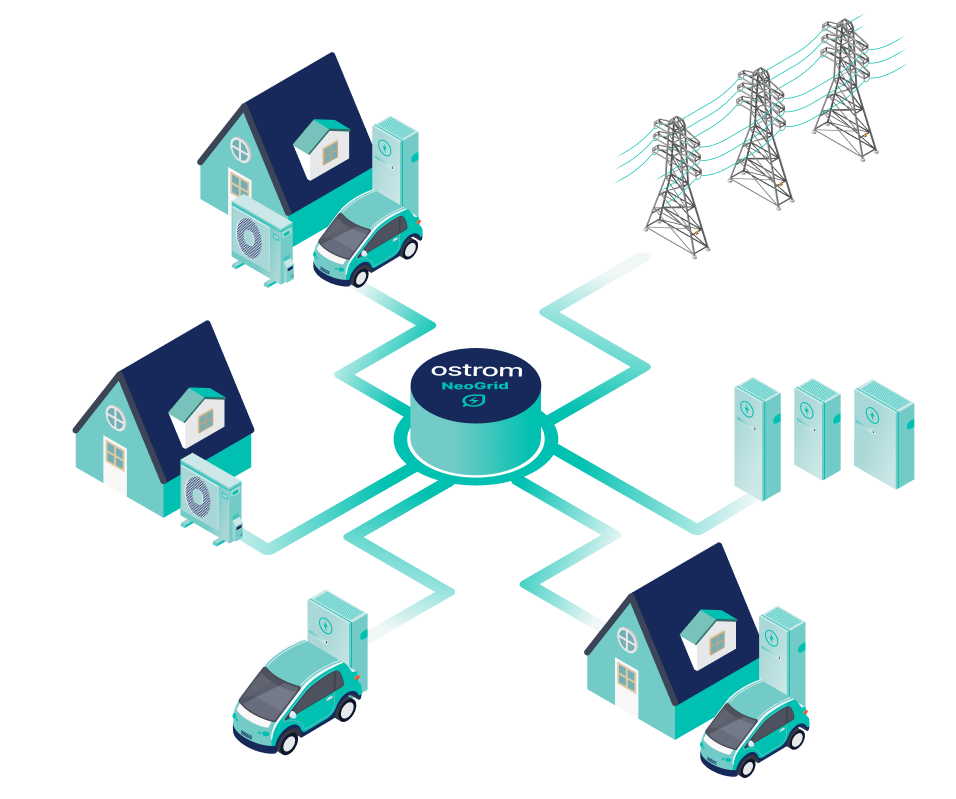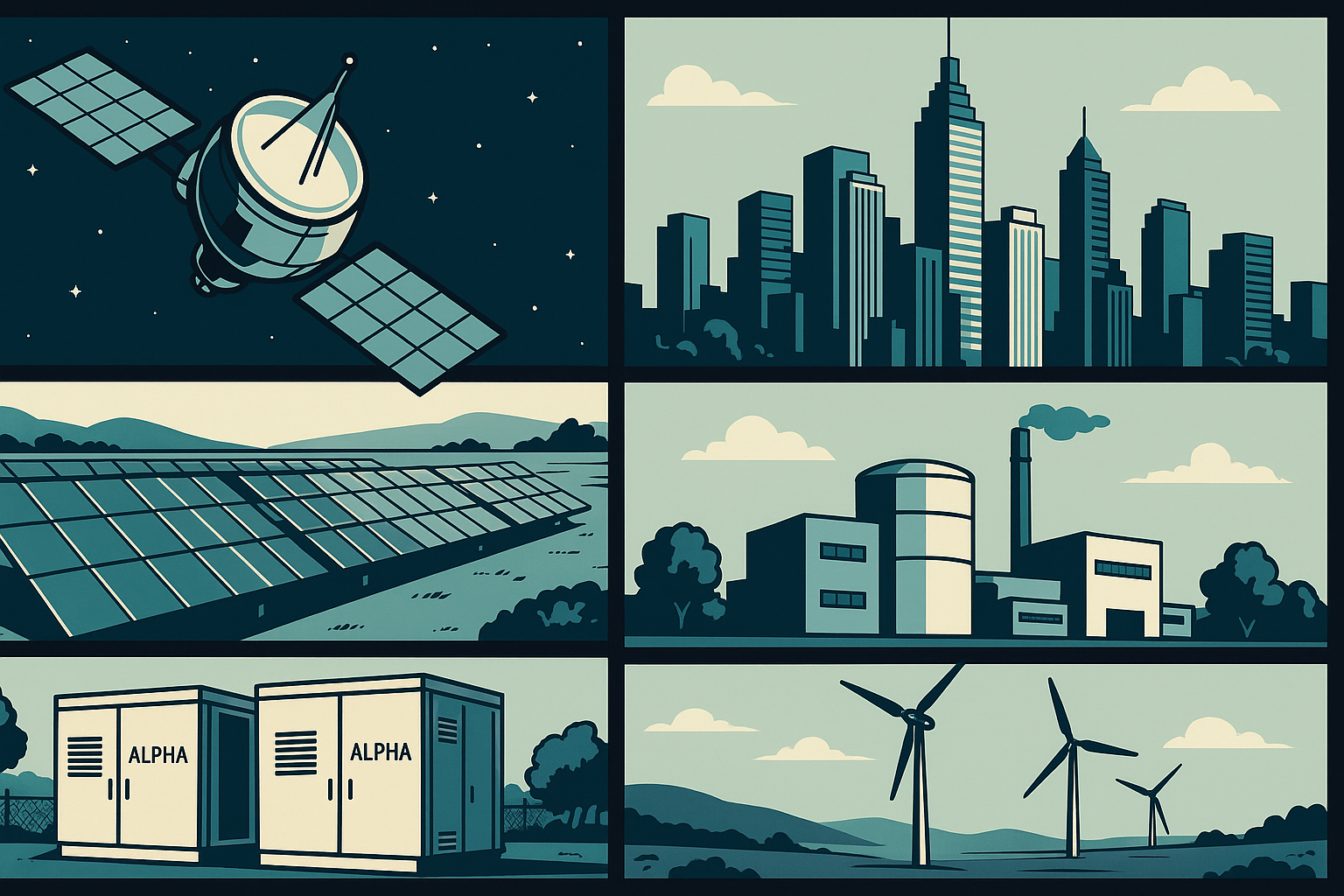Energy
Teil 7: Wie die Kernfusion funktioniert
By
Team Ostrom
7.10.2022

5
Min.

Die Kernfusion ist ein Prozess, bei dem sich zwei Atomkerne zu einem schwereren Kern verbinden und dabei eine enorme Menge an Energie freisetzen. Dieser Prozess ist derselbe, der auch die Sonne und andere Sterne antreibt, und Wissenschaftler arbeiten seit Jahrzehnten daran, diese Energie für die Erde nutzbar zu machen.
Einer der Hauptvorteile der Kernfusion ist, dass sie das Potenzial hat, eine praktisch unbegrenzte Quelle für saubere Energie zu sein. Im Gegensatz zu fossilen Brennstoffen, die bei der Verbrennung Treibhausgase erzeugen, entstehen bei der Kernfusion keine schädlichen Emissionen oder Schadstoffe. Das macht sie zu einer attraktiven Option für die Bewältigung der Klimakrise, denn sie könnte eine Möglichkeit bieten, Strom zu erzeugen, ohne zur globalen Erwärmung beizutragen.
Die Kernfusion hat auch eine Reihe anderer Vorteile gegenüber anderen Formen der Energieerzeugung. So entstehen zum Beispiel relativ geringe Mengen an nuklearen Abfällen, die leicht entsorgt und gelagert werden können. Im Gegensatz dazu fallen bei fossilen Brennstoffen und bei der Kernspaltung (dem Verfahren, das in den meisten Kernkraftwerken verwendet wird) viel größere Mengen an Abfällen an, deren Entsorgung schwierig und kostspielig sein kann.
Wie funktioniert also die Kernfusion? Im Wesentlichen geht es darum, ein Gas, wie z.B. Wasserstoff, auf extrem hohe Temperaturen und Drücke zu erhitzen und unter Druck zu setzen. Unter diesen Bedingungen werden die Wasserstoffatome ionisiert, das heißt, sie verlieren ihre Elektronen und werden positiv geladen. Wenn die Ionen nahe genug beieinander liegen, können sie zu einem schwereren Kern verschmelzen und dabei eine große Menge Energie freisetzen.
Um diese Bedingungen zu erreichen, verwenden Wissenschaftler ein Gerät namens Fusionsreaktor. Es gibt verschiedene Konzepte für Fusionsreaktoren, aber eines der vielversprechendsten ist der Tokamak. Ein Tokamak ist ein donutförmiges Gerät, das starke Magnetfelder nutzt, um das Wasserstoffplasma (das ionisierte Gas) auf die erforderlichen Temperaturen und Drücke einzuschließen und zu erhitzen.
Der Tokamak funktioniert mit Hilfe von Elektromagneten, die ein Magnetfeld erzeugen, das das Plasma umgibt und es in der Vorrichtung festhält. Das Plasma wird mit verschiedenen Techniken aufgeheizt, z. B. durch die Injektion hochenergetischer Teilchen in das Plasma oder durch die direkte Erwärmung des Plasmas mit Mikrowellen.
Sobald das Plasma die erforderlichen Temperaturen und Drücke erreicht hat, kann die Fusionsreaktion beginnen. Der Fusionsprozess setzt eine enorme Menge an Energie frei, die zur Stromerzeugung genutzt werden kann. In einem Fusionsreaktor wird die Energie normalerweise mit einer Dampfturbine gewonnen, genau wie in einem herkömmlichen Kraftwerk.
Es gibt noch viele Herausforderungen zu bewältigen, bevor die Kernfusion als praktische Energiequelle genutzt werden kann. So arbeiten Wissenschaftler/innen zum Beispiel an der Entwicklung von Materialien, die den extremen Temperaturen und Drücken des Fusionsprozesses standhalten können. Außerdem versuchen sie, die Effizienz des Prozesses zu verbessern, denn derzeit wird mehr Energie benötigt, um die Fusionsreaktion aufrechtzuerhalten, als bei der Reaktion selbst erzeugt wird.
Eine der größten Herausforderungen beim Erreichen einer anhaltenden Fusionsreaktion ist es, das Plasma über einen längeren Zeitraum auf den erforderlichen Temperaturen und Drücken zu halten. Das Plasma ist extrem heiß und turbulent, und es ist schwierig, es über einen längeren Zeitraum in der Anlage zu halten. Wissenschaftler/innen arbeiten an der Entwicklung neuer Techniken zur Kontrolle des Plasmas, z. B. mit Hilfe von externen Magneten, um das Plasma zu formen und zu stabilisieren.
Eine weitere Herausforderung ist es, einen Weg zu finden, die Energie aus dem Plasma auf effiziente und praktische Weise zu gewinnen. Ein vielversprechender Ansatz ist die Verwendung von supraleitenden Hochtemperaturmagneten, um die Magnetfelder zu erzeugen, die das Plasma einschließen. Diese Magnete sind viel effizienter als herkömmliche Elektromagnete und könnten dazu beitragen, die Effizienz des Fusionsprozesses erheblich zu steigern.
Trotz dieser Herausforderungen glauben viele Experten, dass die Kernfusion das Potenzial hat, die Art und Weise, wie wir Strom erzeugen, zu revolutionieren. Wenn es Wissenschaftlern gelingt, diese Herausforderungen zu überwinden und einen Weg zu finden, die Fusionsreaktion unbegrenzt aufrechtzuerhalten, könnte sie eine praktisch unbegrenzte Quelle für saubere Energie darstellen.















.avif)